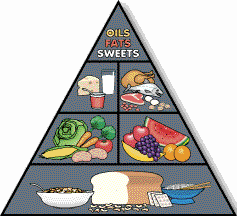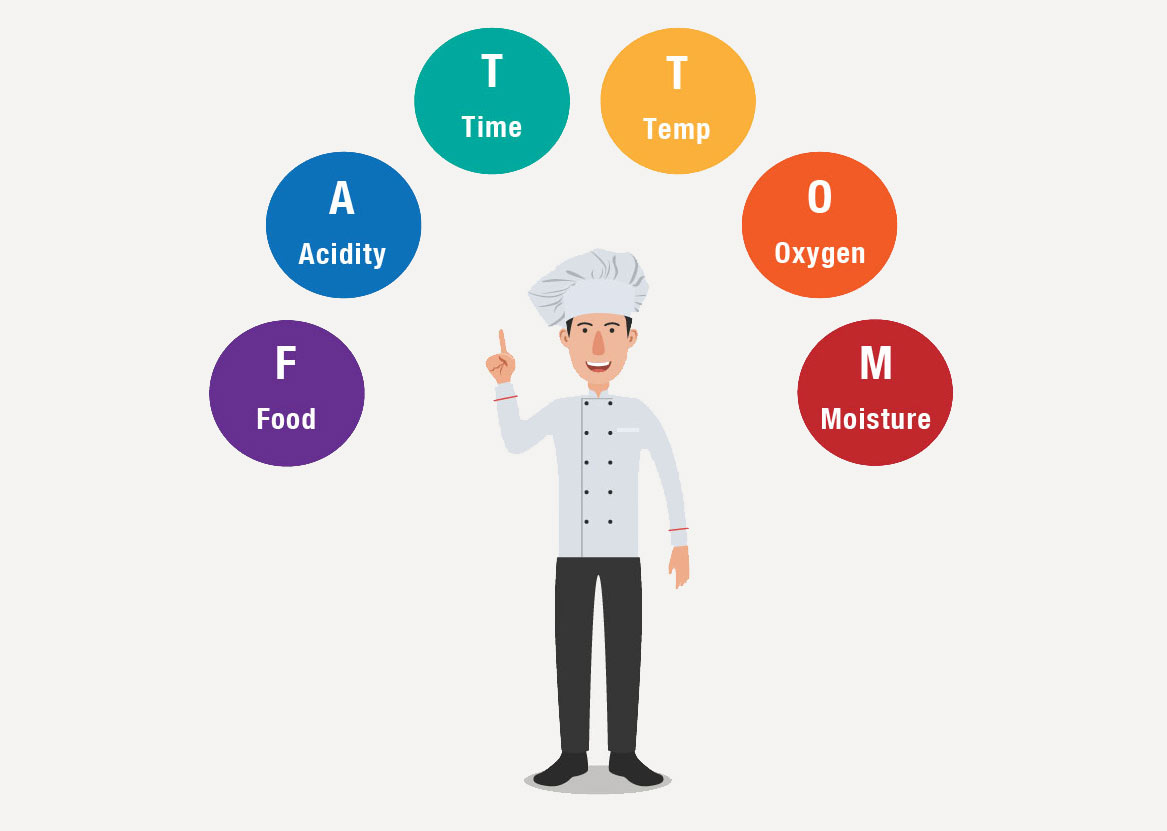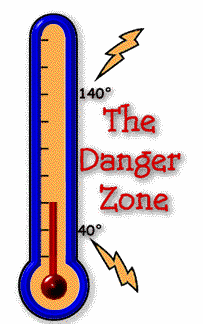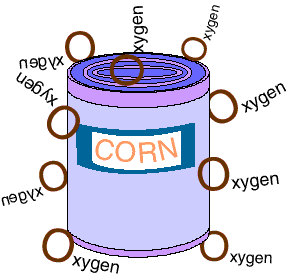Many people get sick each year from the food they eat. They may have diarrhoea, vomiting, upset stomach, fever, or cramps. They often think they have the flu, but the real problem is a foodborne illness caused by bacteria in the food they ate a few hours or several days ago.
Bacteria is the Greatest Threat To Food Safety
Of all the micro-organisms, bacteria are the greatest threat to food safety. Bacteria are single-celled, living organisms that can grow quickly at favourable temperatures. Some bacteria are useful. We use them to make foods like cheese, buttermilk, sauerkraut, pickles, and yoghurt. Other bacteria are infectious disease-causing agents called pathogens that use the nutrients found in potentially hazardous foods to multiply.
Some bacteria are not infectious on their own, but when they multiply in potentially hazardous food, they eject toxins that poison humans when the food is eaten.
Food handling practices are risky when they allow harmful bacteria to contaminate and grow in food. If you touch a potentially hazardous food during preparation, you may transfer several thousand bacteria to its surface.
Under the right conditions, bacteria can double every 10 to 30 minutes. A single bacterium will double with each division - two become four, four become eight, and so on. A single cell can become billions in 10 to 12 hours.
We Need To Understand FAT TOM!
What can we do to ensure that the environment in which our products grows, is packed and handled and has optimum food safety standards?

Who is FAT TOM?

F - is for Food
Nutrients available in food often determine which microorganisms will grow in it. While some microorganisms have simple nutrient requirements, some pathogens require a complex diet, including vitamins and minerals found in the foods we eat.
Moist protein-rich foods, such as meat, milk, eggs and fish, are potentially hazardous. That is, they are most likely to cause foodborne illness because they are vehicles of transmission of pathogenic bacteria and can support the growth of these bacteria.
pH is the symbol for the degree of acidity or alkalinity (base) of a substance. Bacteria grow best in an environment that is neutral or slightly acidic. Most bacterial growth is inhibited in very acidic conditions. That is why acidic foods, like vinegar and fresh fruits, seldom provide a favourable climate for pathogenic bacteria.
A - is for Acidity

pH is measured on a scale from 0 to 14. An environment with a pH of 7.0 is exactly neutral neither acid nor alkaline. Pure water has a pH of 7. Foods with a pH below 7.0 are acidic; pH above 7.0 is alkaline. The lower the pH, the higher the acidity; the higher the pH, the lower the acidity. Most bacteria will not grow at pH levels below 4.6. Micro-organisms thrive in a pH range between 6.6 and 7.5.
T - is for Time
Pathogenic micro-organisms reproduce by cell division. One becomes two. Two become four. When small numbers of pathogens are present in food, they pose a very low risk to consumers. However, when low acid food (food with a neutral or alkaline pH) is abused by placing it in the DANGER ZONE (40° to 140°F or 5° to 60°C) longer than two hours, pathogens multiply rapidly. Restricting the time that low acid foods stay in the DANGER ZONE to two hours or less prevents the growth of large numbers of pathogens.
T - is for Temperature
Microorganisms grow fast between the temperatures of (5° to 60°C). During the two-hour period in the DANGER ZONE, only minimal growth and reproduction can occur.
One important rule of food safety is to stay out of DANGER ZONE, where potentially hazardous foods support the growth of pathogenic microorganisms. In general, it is advisable to cool fruit as soon as possible after harvesting.

O - is for Oxygen
Some microorganisms need oxygen (air) to grow, that is, they are aerobic.
When foods such as meat, fruit or vegetables are canned, oxygen is excluded from the environment. Therefore, the growth of aerobic organisms is controlled, and the food is preserved. Such foods are shelf-stable and do not require refrigeration.
Some micro-organisms will grow only in anaerobic conditions (in the absence of oxygen). Botulism, a rare type of foodborne illness, is caused by a specific type of organism that grows only in anaerobic conditions (in the absence of oxygen). Improperly preserved home-canned foods are usually the source of botulism.

M - is for Moisture
All micro-organisms must have an abundant supply of water to grow. Consequently, the perishability of a food is related not only to moisture content but also to water activity.
Moisture content is the amount of water in food and is expressed as a percentage. Water activity ( aw ) is the amount of water available for deterioration reactions and is measured on a scale of 0 to 1.0. Bacteria, yeast, and mould multiply rapidly at a high water activity--above 0.86. Meat, produce and soft cheeses have aw in this range (between 0.86 and 1.0).
Pathogenic bacteria have difficulty growing in foods such as jams and jellies, dry noodles, flours, candies and crackers, where aw is below 0.85. Foods preserved with salt or sugar, such as jams have a lower aw because salt and sugar deprive microorganisms of water and inhibit their reproduction. These products are shelf-stable (i.e. they do not need refrigeration).